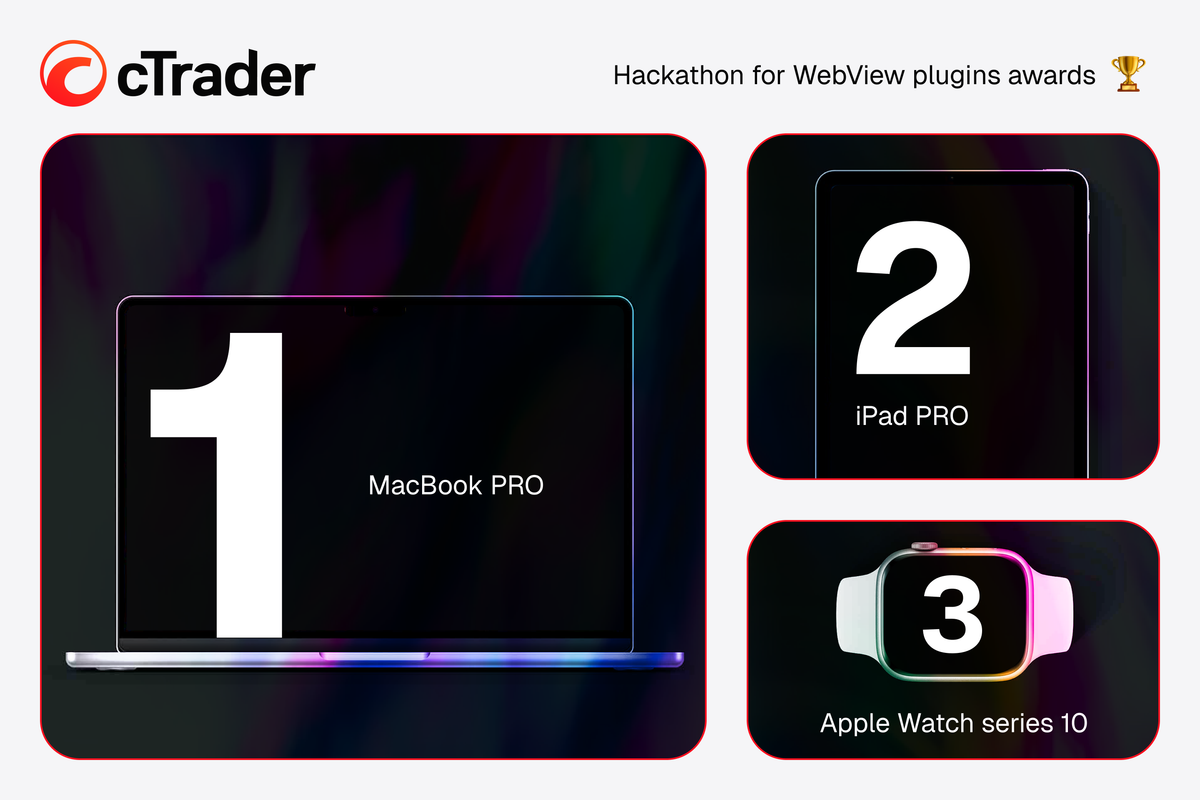WebView plugins SDK vs Open API: Integration Options
Discover the differences between WebView SDK and Open API and when to use each. Our Store will soon launch a new cross-platform WebView Plugins category—build mobile and desktop extensions in minutes. Coming soon!
In the cTrader ecosystem, developers have two main ways to extend platform functionality:
- WebView SDK – for building in-platform plugins that run inside the cTrader client.
- Open API – a RESTful interface for any external service or application.
Both give you access to trading data and account operations, but each shines in different scenarios. Let’s break down their key differences, show you when to pick which, and explore how you can even combine them for maximum flexibility.

🔍 Core Comparison
| Characteristic | WebView SDK | Open API |
|---|---|---|
| Context of use | Only within WebView plugins | Not tied to any specific flow; usable by any external service |
| Availability | Only when a WebView plugin is launched in cTrader | Always available, independent of the user’s session |
| Invocation point | Called from the plugin’s browser context (frontend) | Called from a server environment (backend) |
| Account access | Granted automatically for the active account when the plugin starts | User must grant consent per account via cTrader ID Site |
| Direct cTrader platform access | Yes – trade, navigate screens, fetch current-account data | No – data only via API, no direct UI interaction |
| Performance | High request volumes can impact UX in the plugin* | Scales easily for large data queries and aggregation |
| Without user session | No – runs only inside an authenticated cTrader session | Yes – can run on developer/service tokens; quotes may differ |
| Plugin use cases | Trading flows, stats display, UI navigation within cTrader | Market forecasting, large-scale data jobs, algo/copy-trading |
| Historical data* | Yes | Yes |
Full SDK reference: https://help.ctrader.com/webview-plugins/references/public-server-message/
Open API docs: https://help.ctrader.com/open-api/
📌 When to Use Which
- WebView SDK
- You need to send the trader from your plugin to a specific cTrader screen.
- You want to display the real-time balance, margin, P&L of the active account - active Trading account.
- You want to allow clicking “Buy” or “Sell” right inside your plugin. - not just clicking - allow trading activity inside the plugin.
- Open API
- You’re building an external market-analysis service or forecasting engine.
- You need to aggregate data across hundreds of accounts for reporting.
- You’re creating a copy-trading or social-trading platform.
- You need background processing (backtesting, batch jobs, PDF reports).
Getting started is simple — but there’s one crucial first step you can’t skip. sign up to the cTrader Developer Club
🔐 If you are already a member, just sign in.
🛠️ Simple Examples
- Plugin with WebView SDK
Imagine a mini chart plugin inside cTrader that reads the trader’s theme (light/dark) and subscribed symbol, shows a tiny price chart, and lets them place orders—no backend required.
Check out these 4 demo plugins to get inspired:
🎮 Example 1
🎮 Example 2
🎮 Example 3
🎮 Example 4
- Open API Service
Picture a web portal where you log in once and can see analytics for all your linked accounts, run backtests on historical data, or set up automated weekly performance reports emailed to you.
🎯 Hybrid Approach: Best of Both Worlds
If you already have a powerful backend built on Open API, you can enrich it with a WebView plugin:
- UI Frontend in cTrader
– Use the WebView SDK to embed a sleek dashboard inside cTrader that calls your existing Open API endpoints. Traders stay in one place, with a tool that feels native. - Seamless Authentication
– Let the SDK handle user login and account selection, then pass the token (cTrader ID) to your Open API service under the hood. No extra login screens. - Interactive Workflows
– Trigger UI actions (like opening an order ticket) from your plugin, but run heavy computations or multi-account operations on your Open API-powered backend.
Example Hybrid Use Case:
You’ve built a “Smart Alerts” service on Open API that scans markets and pushes signals. Add a small WebView plugin inside cTrader that shows real-time alert badges on your favorite symbol list, and lets traders click to execute directly—bridging your external analytics with in-platform execution.
By choosing the right interface—or combining both—you can deliver seamless, powerful experiences that leverage cTrader’s full potential, whether you need tight UI integration or scalable, backend-driven workflows.










Comments ()